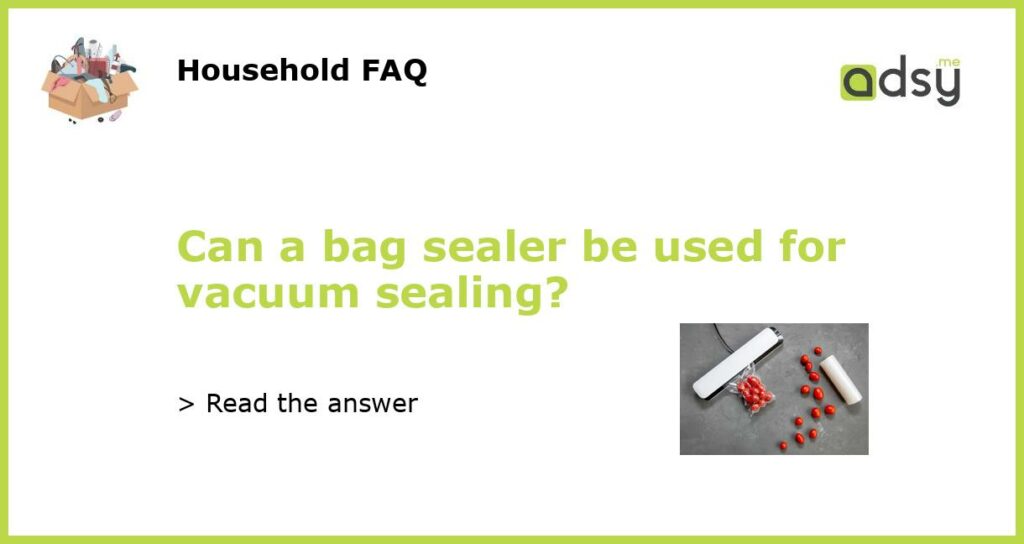Bag Sealers vs. Vacuum Sealers
Before answering the question, it’s important to understand the difference between bag sealers and vacuum sealers. Bag sealers are designed to close or seal bags using heat, pressure, or adhesive. It’s perfect for sealing food, documents, and other small items. On the other hand, vacuum sealers are designed to remove air from the bag before sealing it, which significantly increases the shelf life of food items.
Using a Bag Sealer for Vacuum Sealing
The short answer to this question is, no, a bag sealer cannot be used for vacuum sealing, as they are two entirely different processes. Bag sealers only seal the bag, whereas vacuum sealers remove air from the bag before sealing it. Using a bag sealer for vacuum sealing will not remove the air from the bag, allowing oxygen to enter and spoil the food.
Benefits of Vacuum Sealing
Vacuum sealing is a popular food preservation method. It has several benefits, such as extending the shelf life of food, preventing freezer burn, keeping food fresh and delicious, and saving space in the fridge or freezer. It also helps to reduce food waste by preserving leftovers and allowing for bulk purchases.
Types of Vacuum Sealers
There are two types of vacuum sealers available in the market. The first type is the handheld vacuum sealer, which is portable and perfect for sealing small items like leftovers, fruits, and vegetables. The second type is the countertop vacuum sealer, which is more suitable for heavy-duty operations, like sealing large quantities of meat or fish for commercial use.
In conclusion, vacuum sealing is a fantastic food preservation method that has many benefits, but it’s crucial to use the appropriate equipment. A bag sealer cannot be used for vacuum sealing as it does not remove air from the bag before sealing it. Vacuum sealers are available in two types, handheld and countertop, and should be used according to the specific needs of the user.






